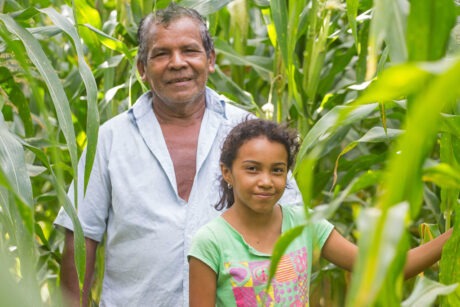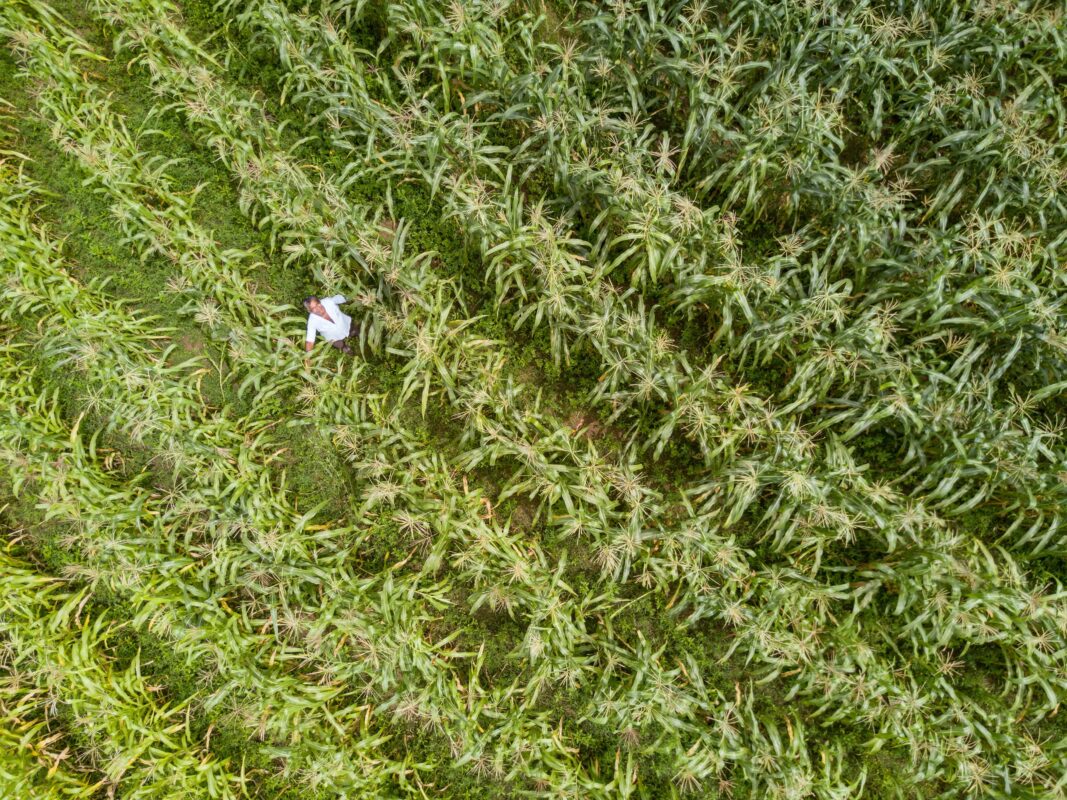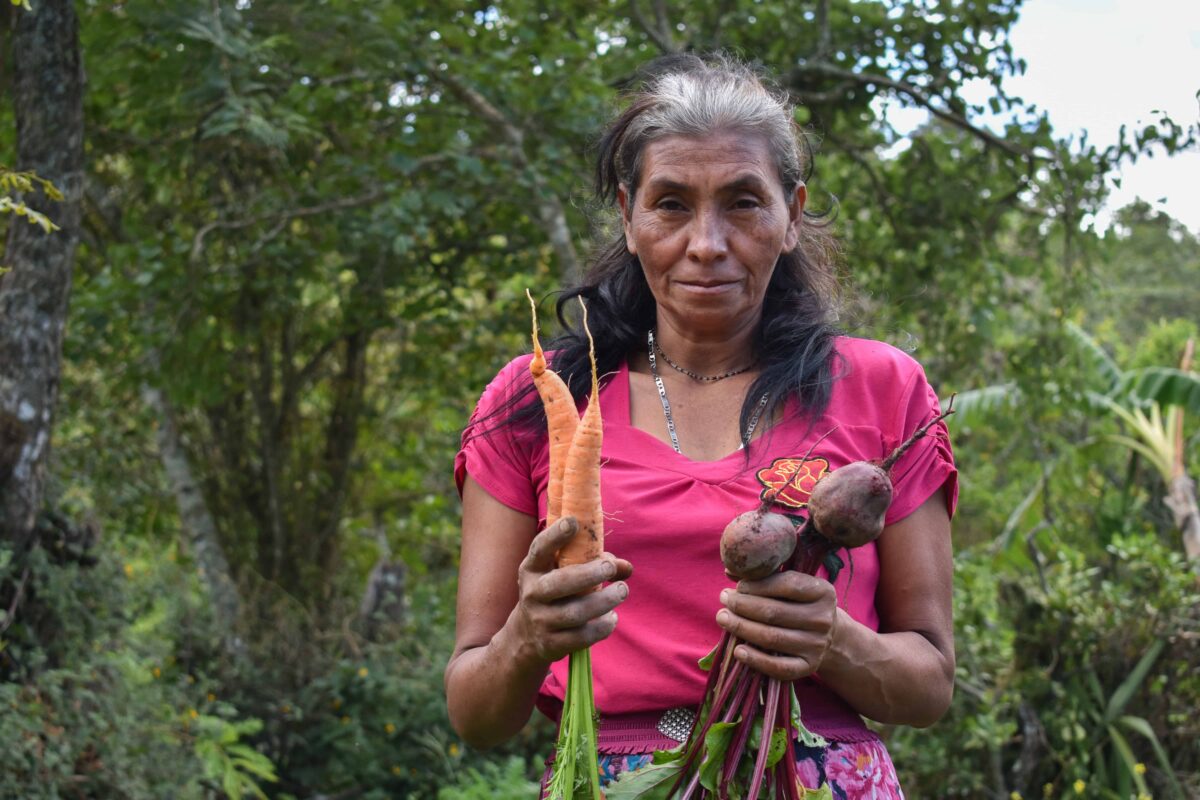Financé par la Banque mondiale et le Honduras Strategic Investment Office (INVESTIR-H), ACS-ProSasur fait partie de l'élargissementProjet de l'alliance corridor sèche. Le projet aborde la pénurie d'eau, hygiène, sous-nutrition infantile et moyens de subsistance en milieu rural, viser à soulever 50,000 les familles hors de la pauvreté extrême en améliorant les pratiques de croissance agricoles, offrir une éducation à la santé et un soutien aux entreprises, entre autres techniques. Creative implémente les programmes 12 municipalités des départements de Choluteca et El Paraíso, travailler avec 6,000 familles.
Dans ce Q&UN, Le chef du parti de l'ACS-Prosur, Jorge Lainez, s'appuie sur son expérience de travail dans les espaces de développement agricole et économique pour évaluer l'impact du projet et ce qui peut être émulé dans les travaux futurs.
Cette interview a été réalisée en espagnol, Traduit en anglais et a été édité pour la longueur et la clarté.
Travailler dans le couloir sec apporte des défis complexes, avec des niveaux élevés de pauvreté aggravés par le changement climatique. Ce qui rend les défis différents des autres projets sur lesquels vous avez travaillé?
Jorge Laínez: Les conditions appauvries de ces familles sont un mélange de plusieurs facteurs. Le principal est le manque d'accès au capital et aux actifs, comme la terre, eau et argent pour l'investissement. Aussi, Le Honduras est situé dans une zone à haut risque pour les événements climatiques. Nous l'avons vu plus récemment pendant l'ouragan eta et la tempête tropicale Iota. Le couloir sec est l'une de la partie la plus sèche de l'Amérique centrale. Une famille sans terre ni eau doit louer un terrain pour semer leurs cultures. Ils doivent planifier leurs cultures par étapes pour tenir compte des zones sèches. Ils sont plus exposés à ces impacts climatiques.
Les saisons pluvieuses sont si aléatoires. Ils ont une saison des pluies intenses, Mais la distribution de cette pluie est axée pendant une courte période, ce qui signifie qu'il ne pleut lourdement que quelques fois par an. Et cela cause [inondation et] Les agriculteurs perdent beaucoup de leurs récoltes. Donc, Les familles deviennent encore plus susceptibles de tomber dans des cycles de pauvreté.
Dans votre position, Quels sont les plus grands défis auxquels vous avez été confrontés dans votre travail? Et quelles sont les améliorations les plus importantes observées depuis la direction de ce projet?
Lainez: Le timing est le principal défi. Si l'aide arrive après le cycle des cultures, De nombreux investissements ne seront pas utilisés. Je parle des moments où nous apportons des engrais ou d'autres entrées agricoles. Tout doit être précis et se produire au bon moment.
Mais nous avons eu de bons résultats. Par exemple, Nous avons travaillé dur pour installer des systèmes d'irrigation. Ce sont de petits systèmes d'irrigation, ou micro irrigation, Mais ils peuvent se couvrir pour 350 hectares irrigués. Donc, S'il n'y a pas de pluie, Nous utilisons ce système d'irrigation afin que les cultures survivent et que ces familles aient une récolte.
Avec composant 2, qui concerne la nutrition et la santé des ménages, Nous avons également une stratégie se concentrant principalement sur les femmes en tant que chefs de ménages, En plus d'offrir des conseils aux parents avec des enfants 5 ans et moins. Nous avons un programme qui mesure leur taille et leur poids entre 0 et 2 ans. Cette surveillance a donné de très bons résultats pour améliorer les niveaux de nutrition des enfants, La diversité de leur alimentation et un meilleur bien-être à la maison en engageant tous les contacts et ressources que nous avons dans les villes.
Dans votre carrière, Vous avez travaillé à l'intersection de la conservation et de la croissance économique. Quels changements avez-vous vu dans ce domaine au fil du temps? Et quel travail est encore nécessaire dans des endroits comme le couloir sec pour intégrer la durabilité environnementale dans les projets de développement agricole?
Lainez: Oui, je’ve a travaillé dans des projets complexes qui incorporaient l'environnement, impacts sociaux et financiers. Il est important d'avoir ces trois domaines dans toutes les activités, Objectifs et impacts parce que vous ne pouvez pas en obtenir un sans les autres.
Pour le projet ACS-ProSur, Une partie du projet plus large de l'alliance du corridor sèche, qui traite principalement de la sécurité alimentaire et de l'amélioration [agricole] opérations et nutrition des ménages, Nous avons dû compléter ces initiatives avec des actions liées à l'environnement. Par exemple, Si nous travaillons avec des systèmes d'irrigation, systèmes de récupération d’eau et de micro-irrigation, Nous devons également prendre en compte la durabilité de ces investissements. Par exemple, nous pouvons avoir des systèmes d'irrigation, Mais nous devons nous assurer que l'eau que nous utilisons pour les systèmes de micro-irrigation est protégé et géré. Alors ici, je parle de gérer les ressources naturelles, Et principalement de l'eau.
Et sachant que - comme vous l'avez dit - le couloir sec est une zone où les défis du changement climatique sont vraiment ressentis par les personnes qui y vivent, Quelles sont certaines des interventions les plus percutantes observées dans le projet? Pourraient-ils être reproduits ou adaptés dans différentes parties du pays?
Lainez: Oui. Encore, Un grand impact que nous avons vu est de travailler avec la récolte d'eau, Préserver cette eau et l'installation de systèmes d'irrigation. Alors d'abord, Les systèmes d'irrigation compensant la période de pluie dans les deux cycles de croissance [ont fait une différence]. Parce qu'il y a deux cycles de culture au Honduras, Il y a deux opportunités pour faire croître les cultures. Les familles qui ont deux cultures sont mieux en mesure de s'assurer qu'elles ont assez à manger et à vendre. L'installation de systèmes d'irrigation est liée à la croissance financière car nous nous assurons que les cultures atteignent la fin du cycle de production.
Deuxième, former les gens comment gérer leurs cultures en appliquant de meilleures intrants, De meilleures pratiques et amélioration des technologies agricoles ont fait une énorme différence. Cela garantit que le producteur a accès aux ressources pour réussir et réduit le risque de perdre des cultures. Et quand ils commencent à avoir une récolte excédentaire, Nous devons travailler avec eux avec la prochaine étape, qui commercialise leurs produits. Nous le faisons principalement en les aidant à former des plans d'entreprises agricoles qui mettent l'accent sur le concept de la chaîne de valeur, reliant l'agriculteur à la ligne d'approvisionnement de la récolte qu'il produit.
Regarder vers l'avenir, Nous allons de l'avant avec quelques idées que nous avons sur le travail dans les systèmes d'irrigation avec l'énergie solaire. En travaillant dans des systèmes d'irrigation avec l'énergie solaire, nous pouvons utiliser plus de manière appropriée les ressources telles que l'énergie renouvelable, le soleil et à travers des panneaux solaires, Nous pouvons couvrir une zone plus grande. Par exemple, Nous envisageons de réaliser des projets pilotes exécutant des systèmes d'irrigation avec l'énergie solaire. Avec ces projets pilotes, nous pouvons acquérir l'expérience pour se propager à d'autres domaines.
Le chômage et l'insécurité sont des facteurs moteurs de la migration au Honduras et dans le couloir sec. Comment le projet aborde-t-il indirectement ce phénomène en mettant en œuvre de bonnes pratiques agricoles et en essayant d'augmenter les moyens de subsistance?
Lainez: Oui. La migration est toujours un problème dans ces pays, Surtout au Honduras. Si nous sommes en mesure de réduire les niveaux de pauvreté avec le projet, ou améliorer le revenu des ménages grâce à une assistance technique et aux investissements que nous faisons avec les familles dans leurs moyens de subsistance, Il ne fait aucun doute que cela contrer la tendance à migrer. Mais il y a des actions qui se démarquent. Par exemple, Nous ciblons impliquant des jeunes et des femmes dans nos projets de développement avec les micro-entreprises.
L'un des projets non agricoles que je vois qui a un grand potentiel dans la zone, Et qui n'a pas encore été développé, est le tourisme. Bientôt, nous mettrons en œuvre deux projets touristiques, Ce qui, je pense, donnera de très bons résultats, et qui ont une forte attraction avec les jeunes et les femmes. Créer des emplois, générer de meilleures ventes de produits des personnes, et encourager un meilleur réseau organisationnel dans et parmi les familles, Je pense que cela peut avoir un impact significatif sur la migration.
Image de caractéristique par Skip Brown.



